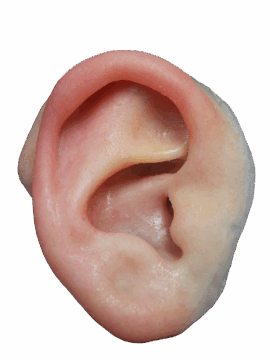Ear Prosthesis Options for Microtia Patients
We use scanning and 3D printing to create ears for maximum accuracy and aesthetics. Our anaplastologists are sensitive to each individual’s style and goals.
Naturalism is accomplished by selective surface treatment: leaving sheen on select cartilaginous areas and a matte finish on adjacent helix and lobe to simulate much softer tissue covered by very fine vellus hair or “peach fuzz”.
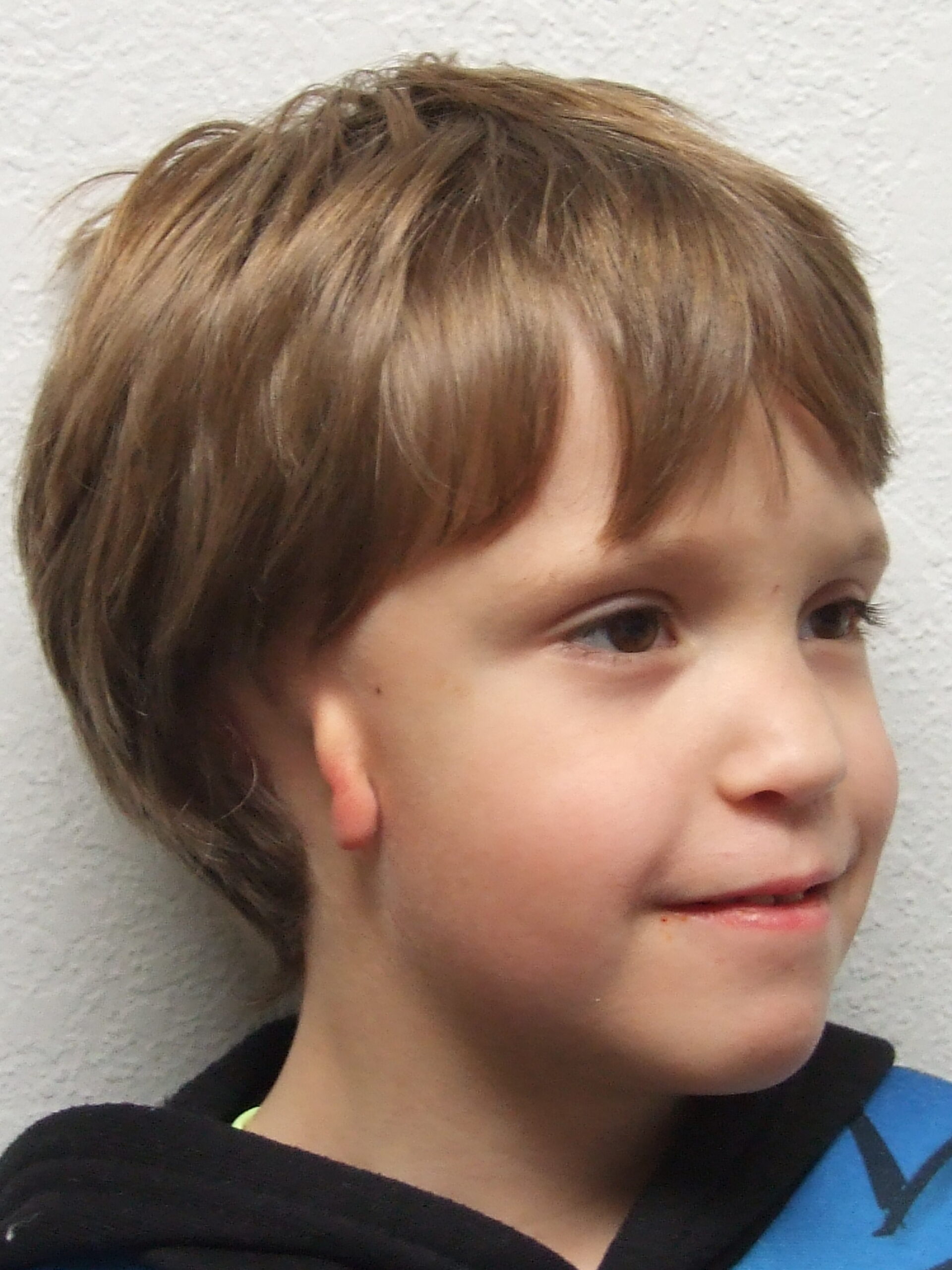
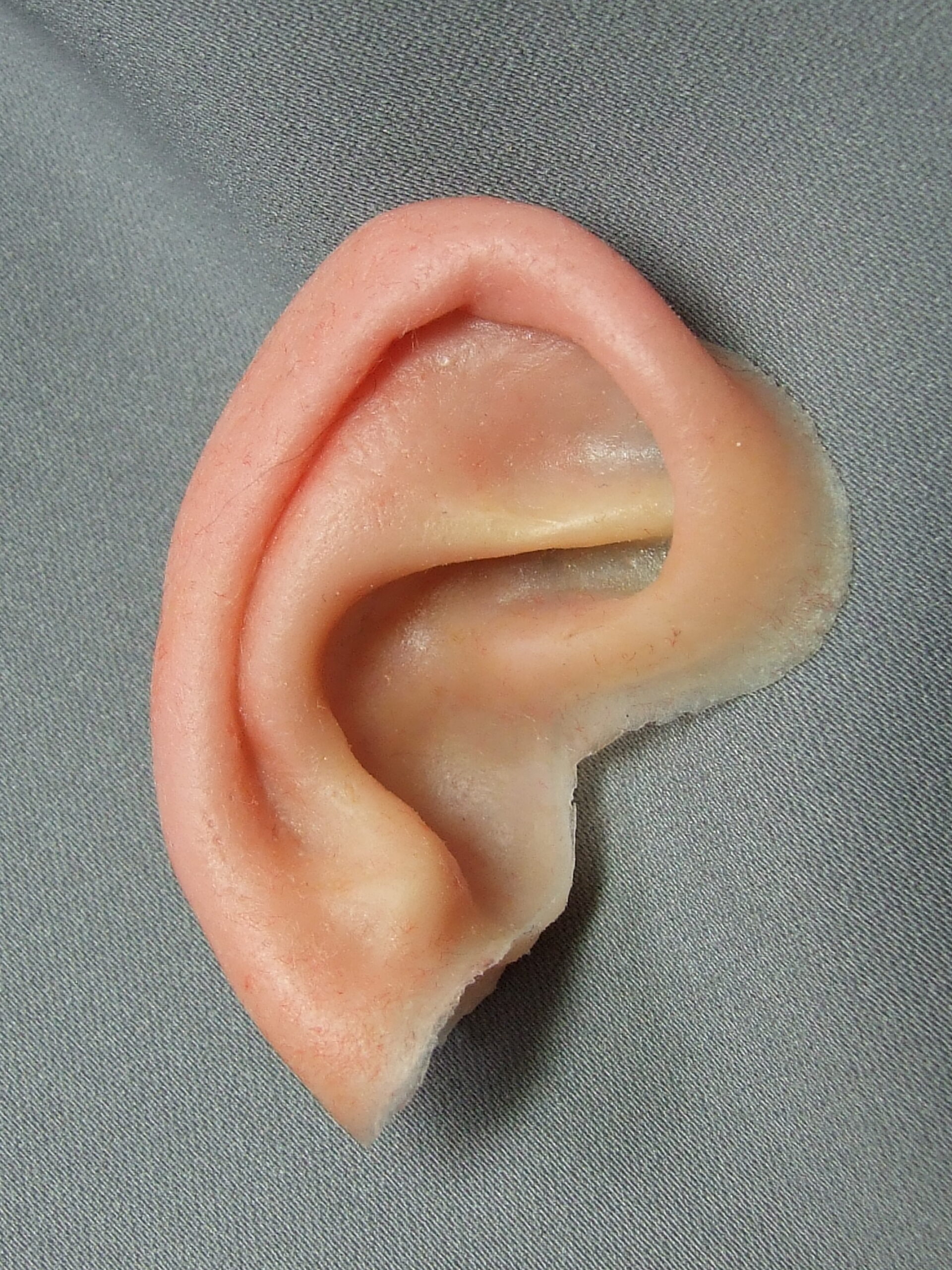
Augmentative to Grade 3 Microtia Adhesive-Retained Ear Prosthesis
Augmentative to Grade 3 Microtia Adhesive-Retained Ear Prosthesis
This series shows the mirror imaged wax model initial assessment/alignment, skin color references, freshly color tinted prosthesis, and the final delivery. This ear prosthesis is available without any surgery. This is especially helpful to see how the prosthesis looks when shaped to augment existing ear tissue. The adhesive-retained ear prosthesis is also appropriate as an interim measure if additional time is needed in deciding whether to undergo surgical reconstruction or to have an implant-retained prosthesis. The prosthesis in this situation might just help bolster a child’s self-confidence through pivotal school years or trying periods, especially if the family has not yet found a surgeon who can provide a promising prognosis for successful ear reconstruction. Many of our patients have become very comfortable with using and caring for their adhesive-retained ear prostheses.
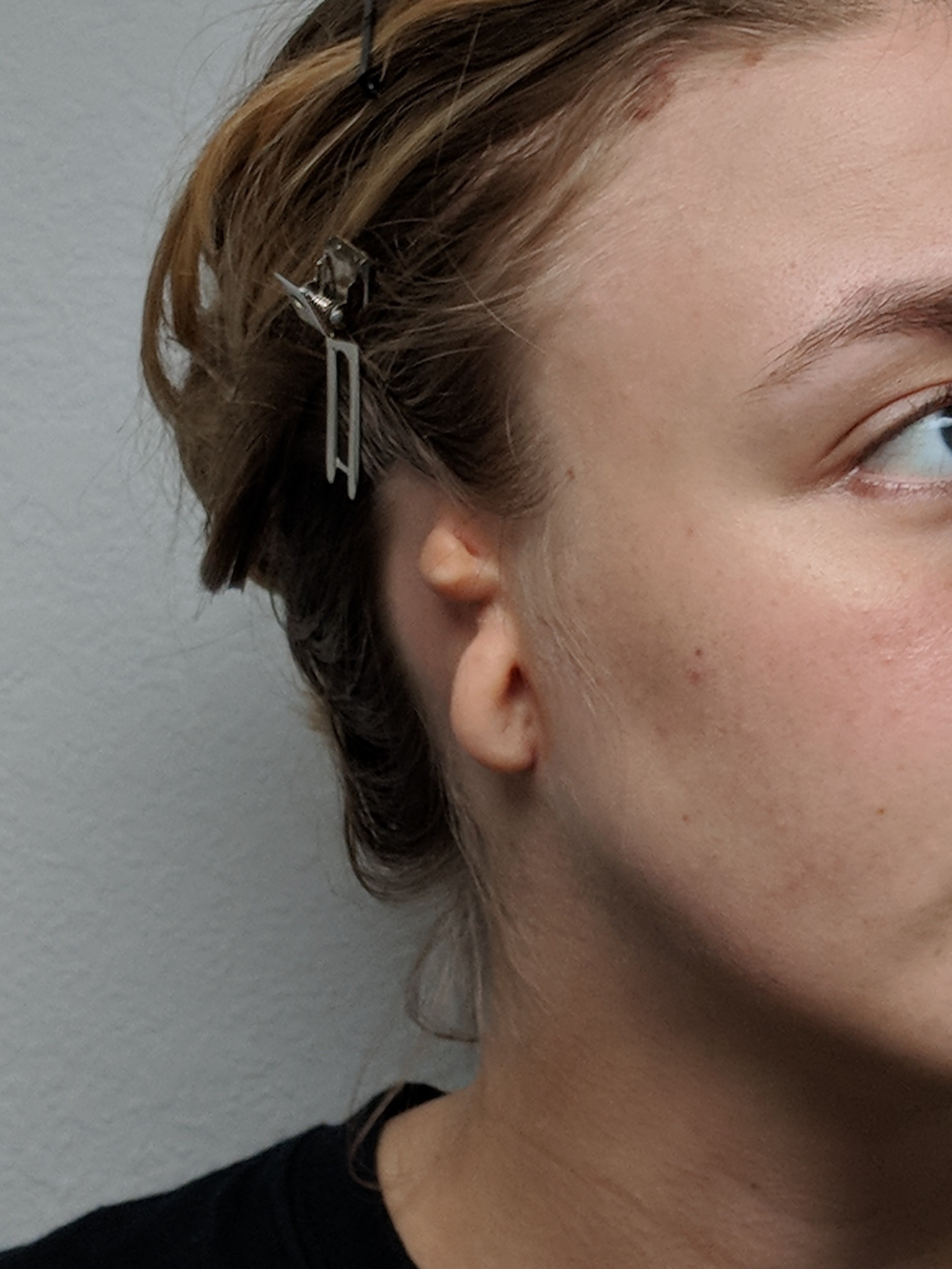
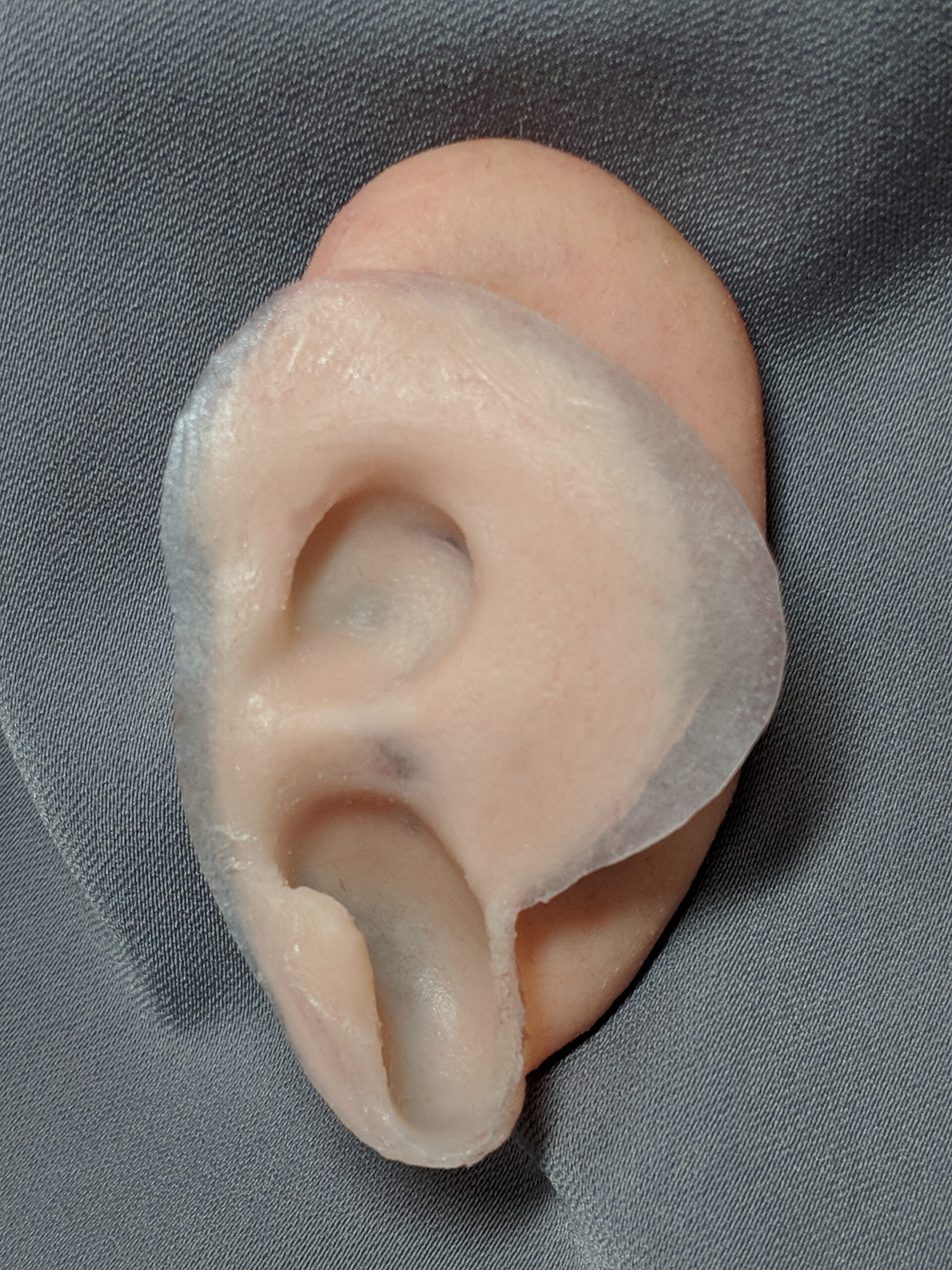
Full Coverage Ear Prosthesis for Grade 3 Microtia
Full Coverage Ear Prosthesis for Grade 3 Microtia
The prosthesis can also be formed right over your microtia. This gives a very nice blend and avoids the possibility that the exposed microtia tissue changes in color during the seasons or blood flow.
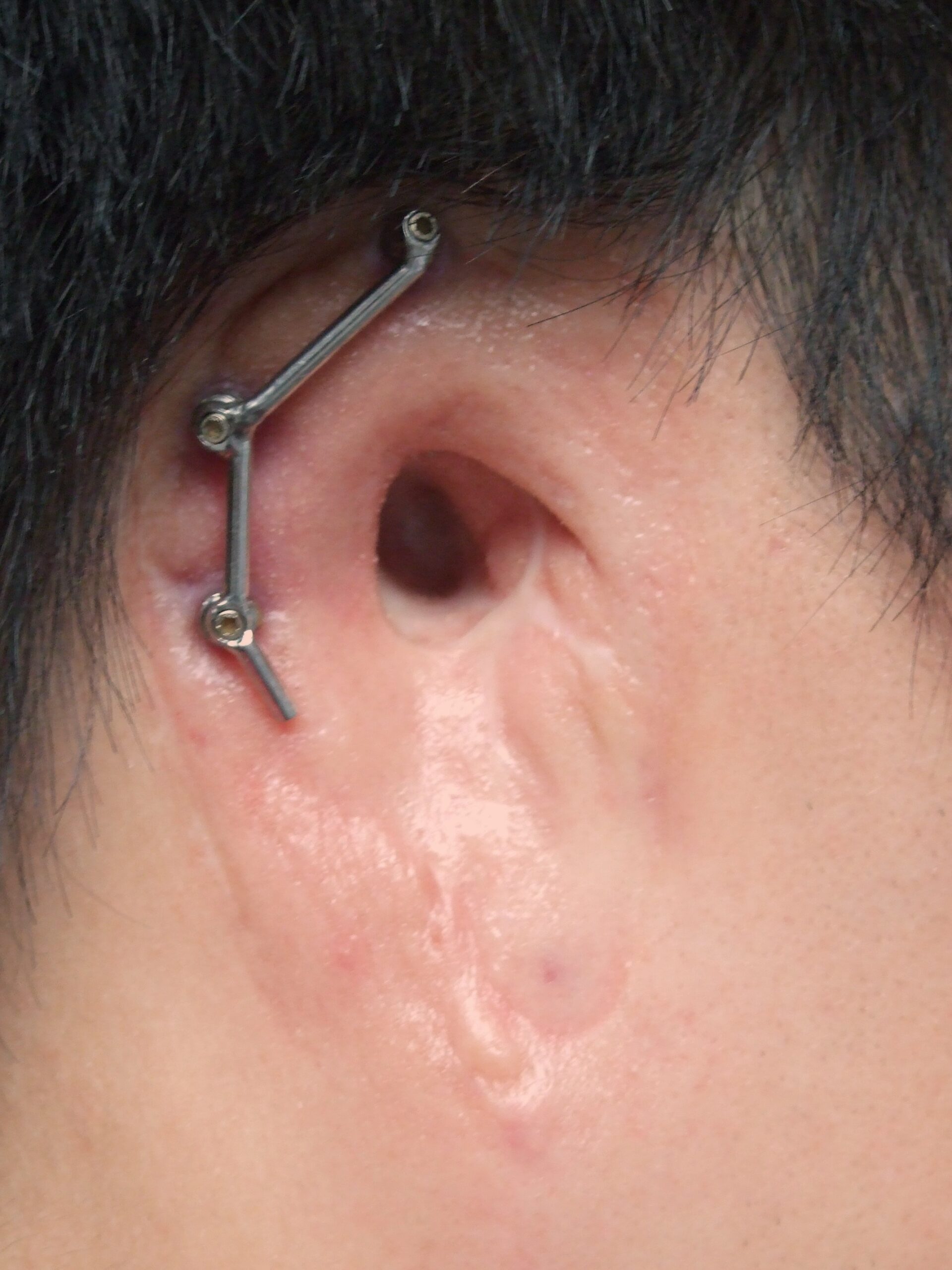
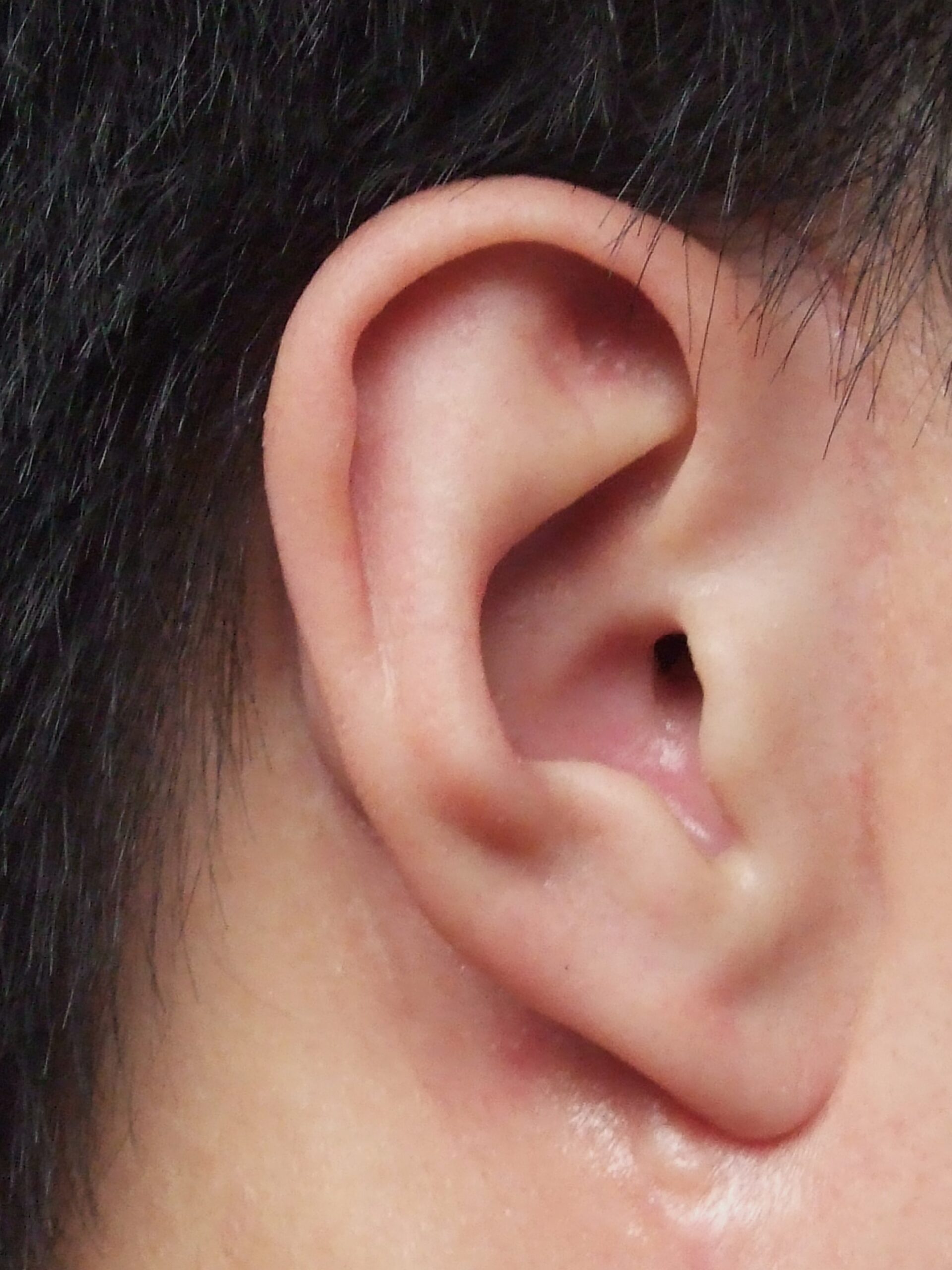
Implant-Retained Bar-Clip Ear Prosthetics
Implant-Retained Bar-Clip Ear Prosthetics
The implant-retained ear prosthesis option is now widely accepted and recommended by physicians and anaplastologists for patients who elect to wear a prosthesis as their preferred lifetime choice. This option should be explored by individuals who are not likely to receive a successful long-term surgical reconstruction of their ear or those tired of living with the look of their failed or “suboptimal” surgical reconstruction.
An implant-retained prosthesis should be explored by those whose priority it is to have the most natural and symmetrical prosthetic ear restoration, and are ready to have their own microtia tissue or surgical reconstruction completely removed. It should be considered by those who cannot or do not want to master adhesive attachment. In other words it is an excellent choice for those ready to embrace the idea of being a prosthesis wearer, and who are determined by their maxillofacial, plastic, or ENT surgeon to be a suitable candidate.
This implant-retained prosthesis does not require any adhesive. It has clips that attach securely to the bar splint seen in the photo. This procedure is like dental implants and is a standard of care in the maxillofacial prosthodontic literature. Placement and removal are easy as a snap and click.
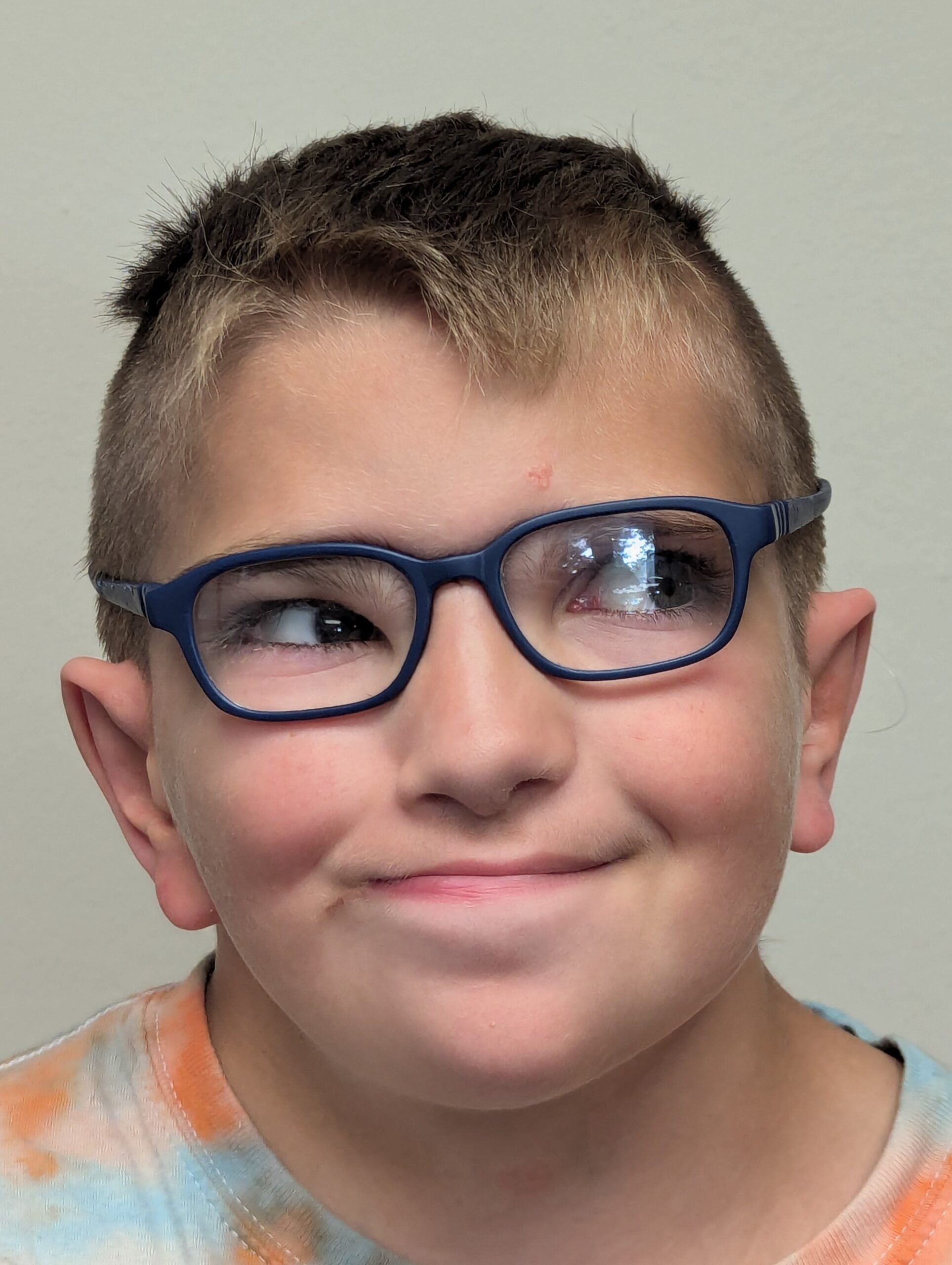
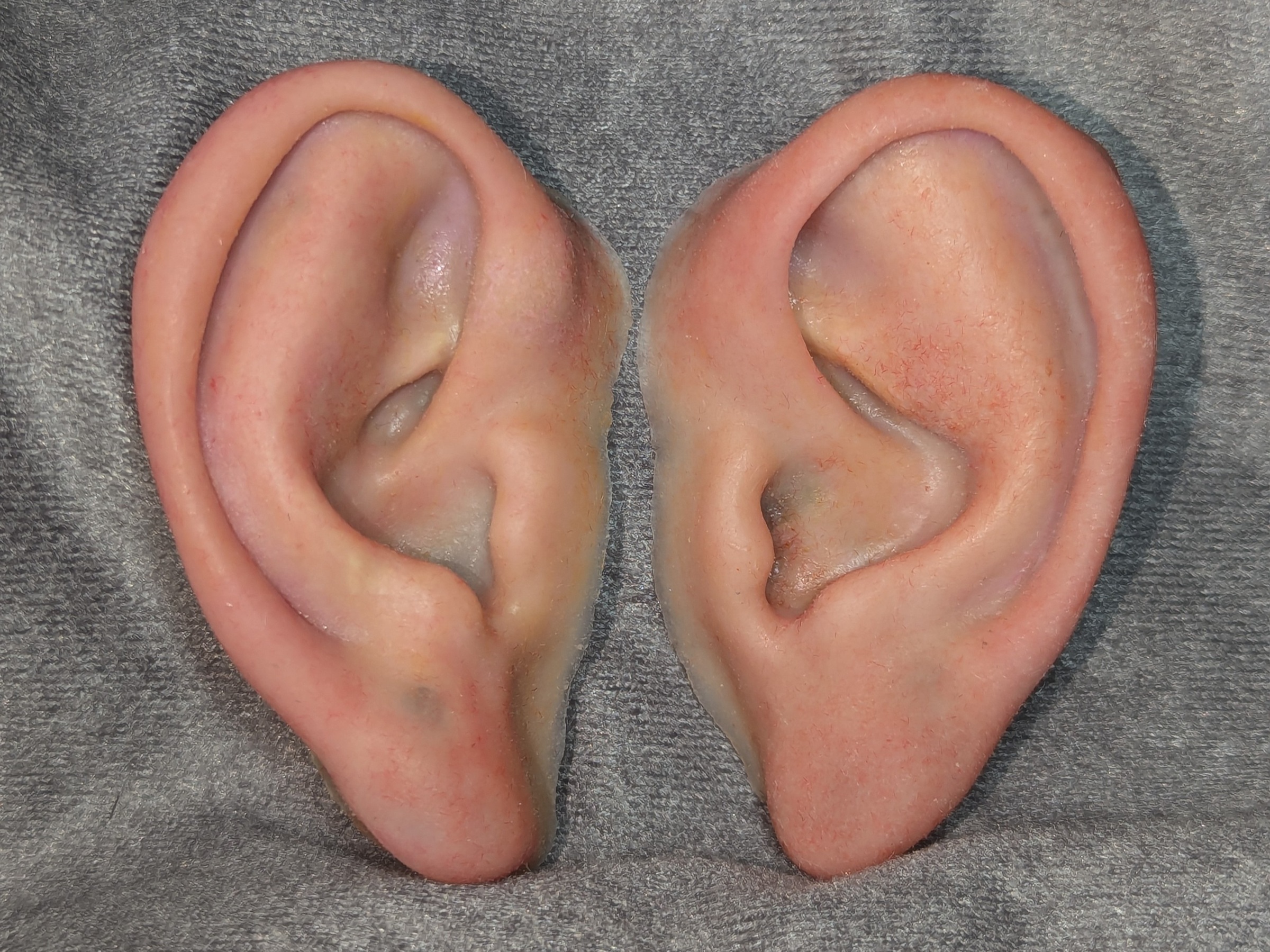
Implant-Retained Magnetic Ear Prosthetics
Implant-Retained Magnetic Ear Prosthetics
The implant-retained ear prosthesis option has been the standard of care and recommended by physicians and anaplastologists for patients who want to wear a prosthesis securely and predictably for lifetime. This option is appropriate for individuals who are not likely to receive a successful long-term surgical reconstruction of their ear. Its a great option for those tired of living with the look of their failed or “suboptimal” surgical ear reconstruction.
An implant-retained ear prosthesis should be explored by those whose priority it is to have the most natural and symmetrical prosthetic ear restoration, and are ready to have their own microtia tissue or surgical reconstruction completely removed. It should be considered by those who cannot or do not want to master adhesive attachment. In other words, it is an excellent choice for those ready to embrace the idea of being a lifetime prosthesis wearer.
This magnetic implant-retained prosthesis does not require any adhesive. It has magnets that attach securely to abutments (sometimes called posts) that are seen in the photos. Placement and removal are easy as a snap and click. This boy wears bilateral prosthetic ears that fit over his microtia tissue.
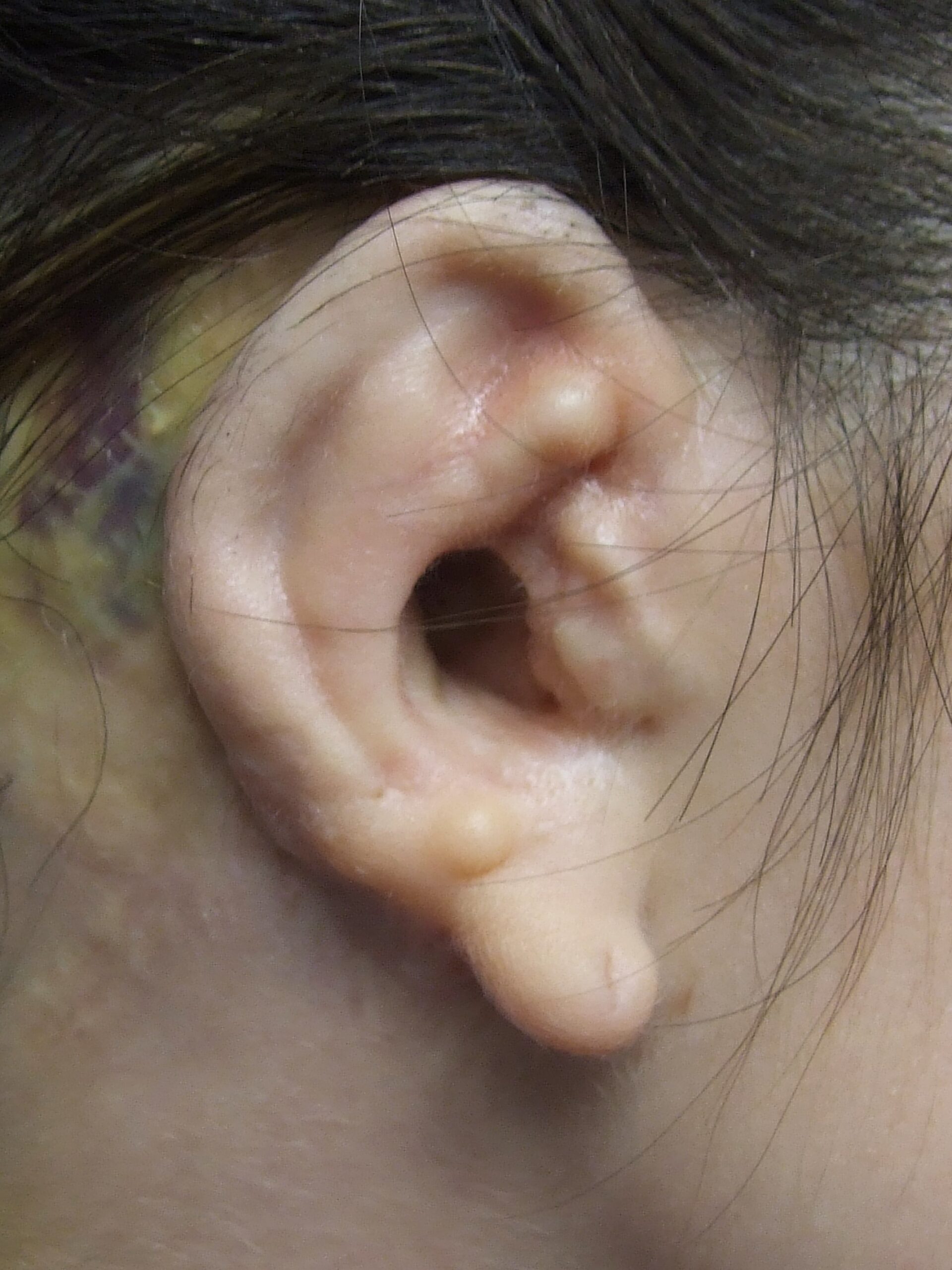
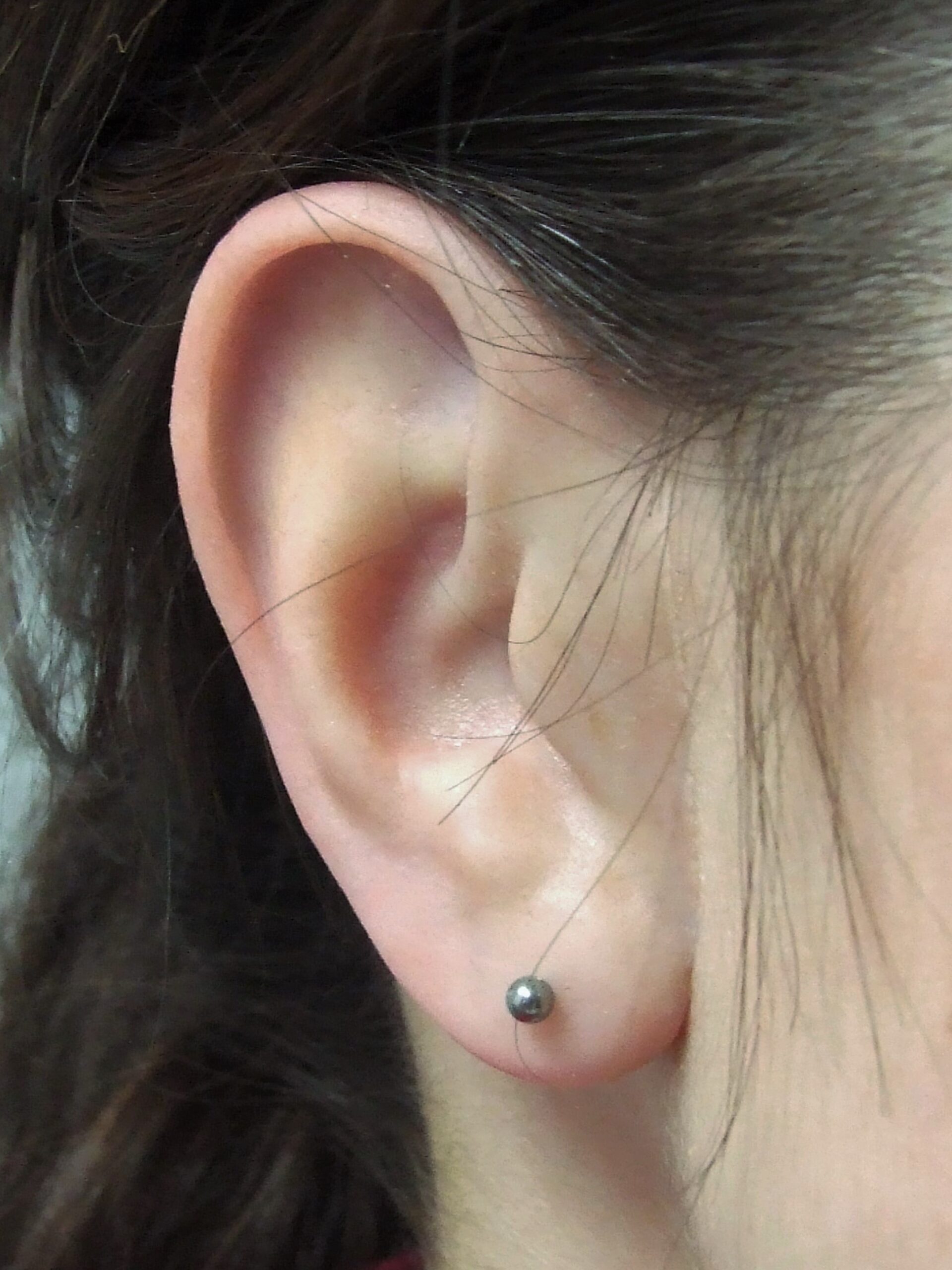
Slip-Over Autologous Ear Reconstruction Prosthesis
Slip-Over Autologous Ear Reconstruction Prosthesis
Sometimes it is possible to create a “slip-over” type prosthesis that is molded over and around an unaltered microtia ear or over a previously surgically reconstructed ear that is not acceptable in appearance to the patient or parent. Because of the intimate fit of this type prosthesis adhesive might be needed only as an extra measure of security or to help seal the edges of the prosthesis. The slip-over prosthesis provides an opportunity to give a more normal look to the affected ear. For example, improved definition of the helix (rim) of the ear is often incorporated into the prosthesis to match the unaffected side. The added helix and adjacent anatomical definition blended into the existing shape creates a more natural look when viewed from the side and a more symmetrical balanced silhouette when viewed from the front or back. Admittedly, the reliance on adhesive can be challenging and burdensome for a child and family. However, this type prosthesis can introduce the nature and benefits of the prosthesis option without having to commit to reconstructive surgery or osseointegration, both of which result in permanent scarring and sacrifice of the child”™s own natural soft tissue. In other words, with the adhesive or slip-over prostheses there is no pain and no bridges have been burned.
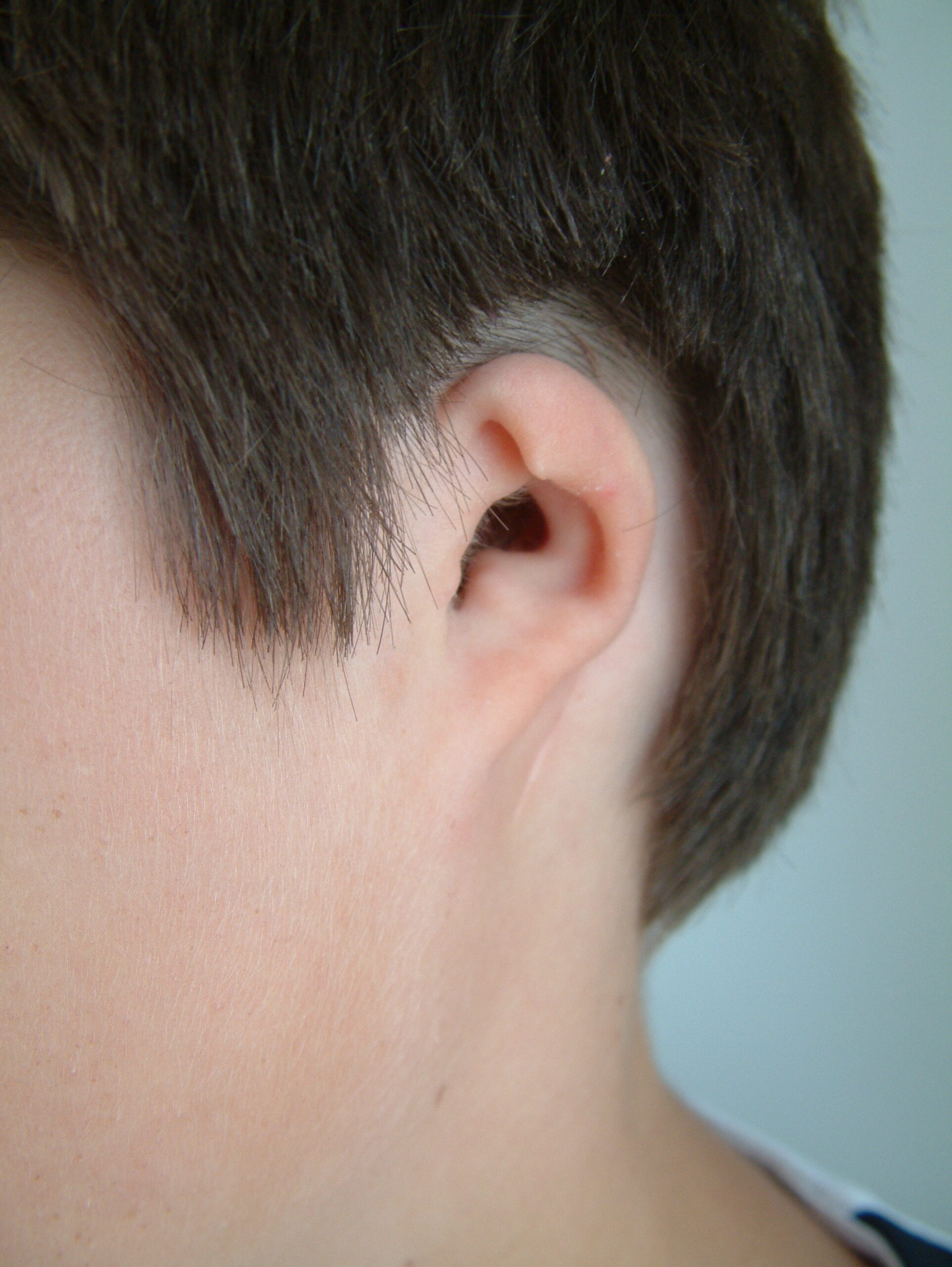
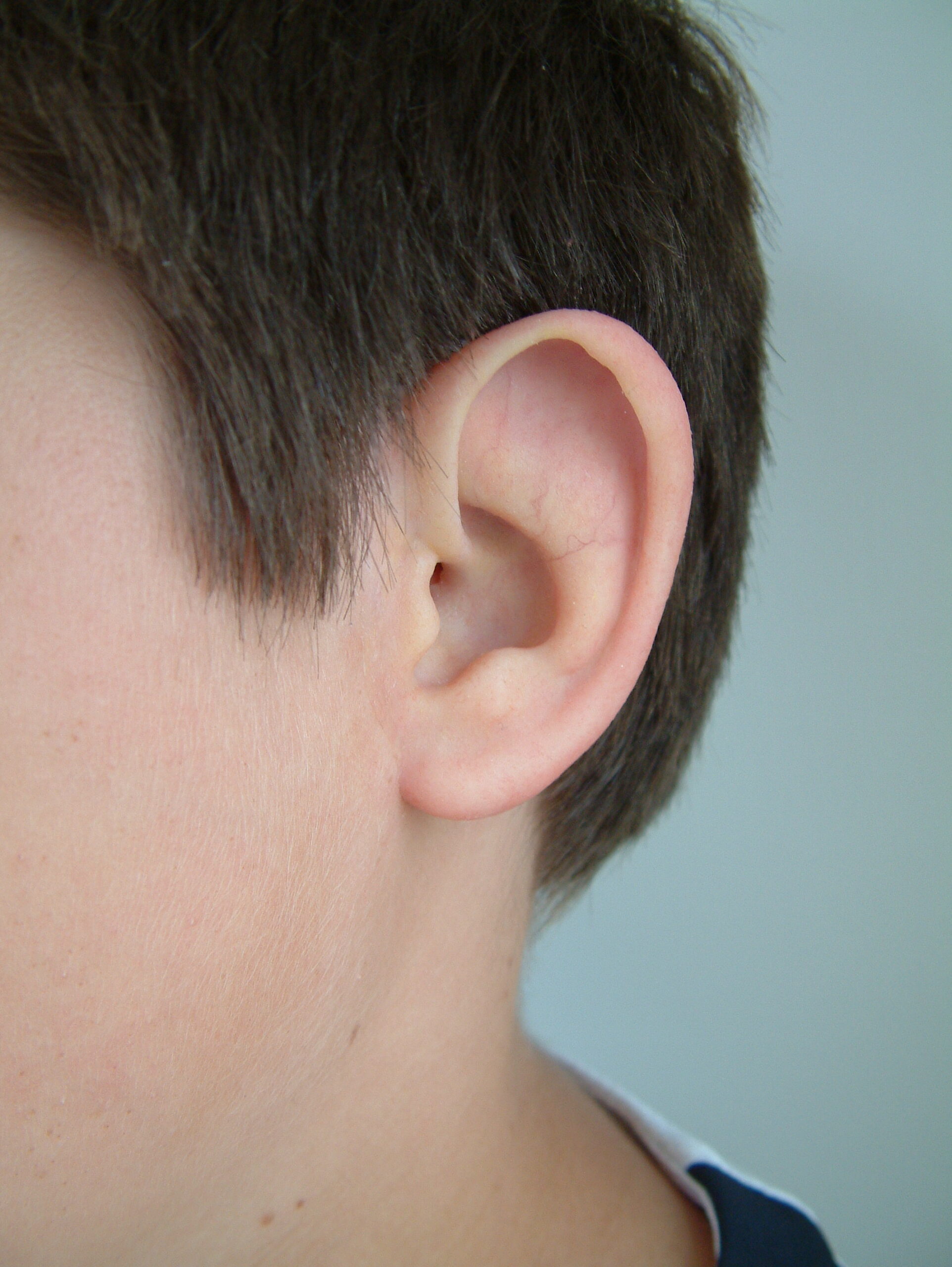
Slip-Over Ear Prosthesis for Untreated Microtia
Slip-Over Ear Prosthesis for Untreated Microtia
The Slip-Over type of auricular prosthesis is tissue-sparing and may be appropriate before any attempt at surgical ear reconstruction or removal of the microtia ear tissue for installation of osseointegrated implants. The shaping of the ear prosthesis occurs over and around the patient”™s own microtia ear. Various adhesives may be used to secure this auricular prosthesis and to create a more seamless blending with the patient’s skin.
This ear prosthesis allows the family to know what it is like to handle and wear a silicone ear prosthesis on a daily basis. The decision is a very personal one and each individual will have different medical factors, microtia configurations and expectations that must be addressed. In some instances the patient will be able to wear the same prosthesis for years with only occasional refurbishing before a new molding is necessary. See how this boy became a successful high school student with the same prosthetic ear!


